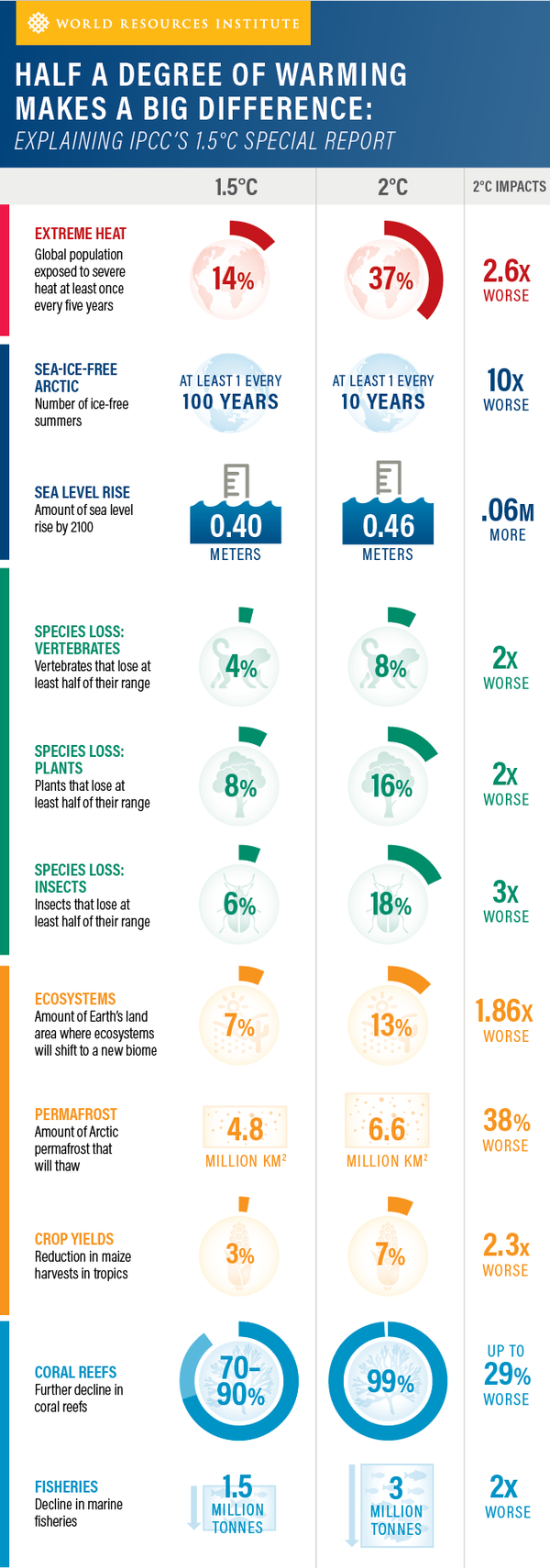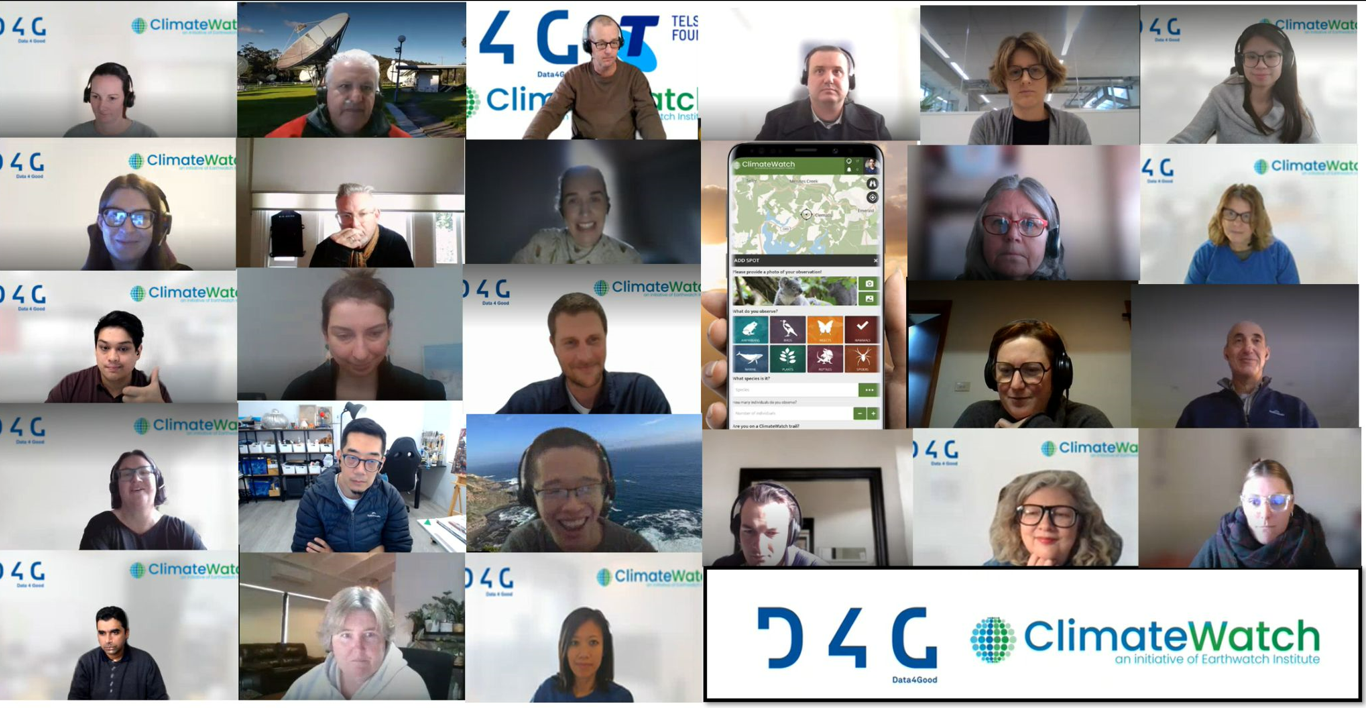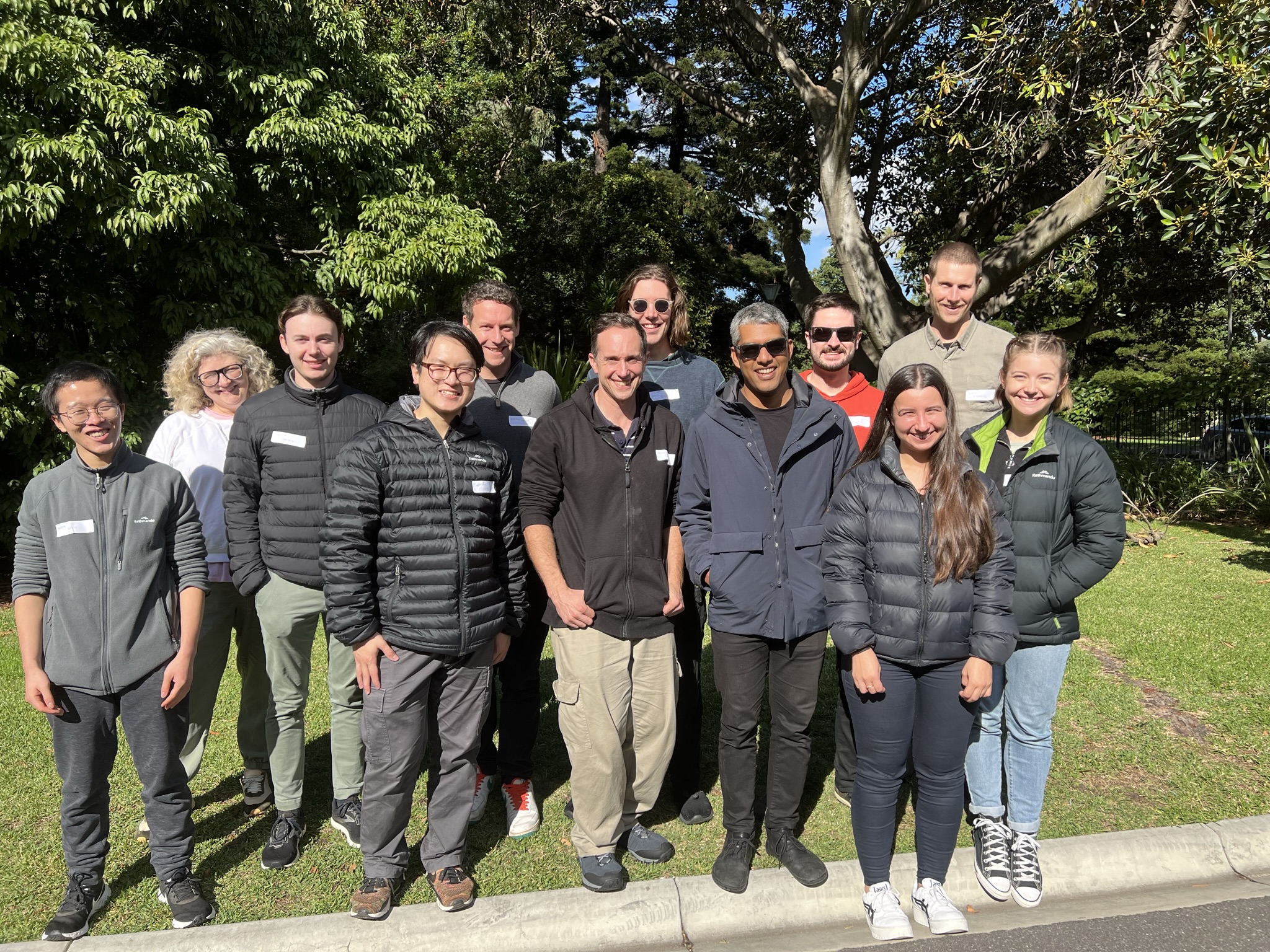Blog
There are a number of things that we look for when validating your observations. Here are some tips on how to be an expert ClimateWatcher.
Species
Some species are only located in particular regions of Australia. Check that you have identified the correct species by using the species profile information either on the website or in the app. Other mobile field guides available from your local museum could also help.
ClimateWatch is interested in the behaviour of a species as well as its location. Watch for species that are doing something particularly different to what you would normally see. For example, looking for nesting behaviour in the Black Swan, which generally happens during their breeding season (April to October in southern parts of Australia).
In 2018 the Intergovernmental Panel on Climate Change (IPCC) released its 1.5°C Special Report which reinforced the huge risks of global warming above 1.5°C, leading to widespread calls for greater climate action.
The IPCC Special Report shows the impacts of global warming of 1.5 °C above pre-industrial levels and related global greenhouse gas emission pathways, in the context of strengthening the global response to the threat of climate change, sustainable development, and efforts to eradicate poverty.
The differences between holding global warming to 1.5°C as opposed to 2°C are illustrated in a World Resources Institute infographic below.

Being cooped up inside, either self-isolating or working from home, can make many of us feel anxious and stir-crazy. Research shows how good being out in nature is for our mental health, but it's important to listen to the current public health guidelines and stay home where required. If you have some natural spaces close to your home, we have created a ClimateWatch guideline for physical distancing:
The Earthwatch team have been busy delivering new ClimateWatch monitoring trails across Australia in 2019, including the first sub-alpine ClimateWatch trail at Mount Buffalo National Park in Victoria.
Mt Buffalo has high vegetation biodiversity. It's sensitive, sub-alpine grassland and woodland plant communities are at high risk from the impacts of climate change and pest species.
ClimateWatch has worked with the Biodiversity and Climate Change Virtual Laboratory (BCCVL) in developing maps for the current, future and range-change predicted habitat suitability of over 100 terrestrial ClimateWatch indicator species.
Not all species monitored on the ClimateWatch program will have BCCVL species distribution models produced for them due to limited occurrence data and limited climate/environmental data for marine species.
Parks Victoria and Earthwatch Australia are partnering to help gather important knowledge about the effects of climate change. The partnership will bring park visitors, nature enthusiasts, students, contractors, park staff, and the general public together with climate change scientists through ClimateWatch; and connect schools and community groups to their parks and neighbourhoods.
ClimateWatch in Parks offers a great opportunity for students to conduct their own individual studies in controlled yet wild environments, while also contributing to national and international research into climate change and phenology.
Changes in the timing of important life-cycle stages of plants and animals, such as flowering, breeding and migration, have provided some of the strongest evidence of climate change impacts on our natural and managed systems. These changes have the potential to disrupt predator-prey relationships and impact on food webs by changing the competition between species. Understanding how individual species and ecosystems will respond to future changes is important for effective planning in natural resource management and agricultural production.
Although we anticipate that species may not respond in similar ways across the globe it is only recently that we have been able to look for consistent patterns amongst southern hemisphere species and regions. For example, a recent study found that overall spring life-cycle stages are starting earlier. However, there were differences between species: for example marine species were more likely to commence breeding earlier than in terrestrial ones, and flowering in plants more so than breeding in birds. One of the strongest signals came from Australian grape vines, with varieties in many regions now reaching maturity, or ready for harvest, much earlier than previously.
At present, we only know a little about how changes seen in single species might impact on the relationship between species and the ecosystem as a whole. This is because, according to the authors of the study, there are large gaps in the information available on the patterns of life-stages of plants and animals in many regions and, as a consequence, there is an urgent need to fill these data gaps. ClimateWatch was cited as an example as one of the ways of filling the gaps.
To read the full article about changes in the Southern hemisphere, click here.
Humans are increasingly migrating towards the world’s major cities. The world’s urban population is thought to have increased six fold since 1950. By 2050, more than 68% of people are predicted to live in cities.1
Australia faces a much steeper challenge, with over 86% of our population living in urban areas already.
Along with urbanisation comes technological advancement and the establishment of the information era. With augmented and mixed realities giving life to a budding metaverse, what was once perceived as science fiction is now realised on a daily basis during an online work meeting.
What was once perceived as science fiction is now realised on a daily basis during an online work meeting.
There are many benefits to a technologically advanced and predominately urban based society, however we cannot ignoreunderlyingrisks. Urban sprawl for example typically leads to reduced water quality, deforested or disrupted natural habitats and displaced wildlife. More pervasive is the underlying risk of a city-bound and plugged-in society becoming disconnected from the natural world.
More pervasive is the underlying risk of a city-bound and plugged-in society becoming disconnected from the natural world.
Research that measured society’s connectedness to nature found a stark decline in the presence of nature inspired or related content since the 1950s.Thiswas the same decade the impact of urbanisation began to take effect.
If our society continues to become physically distant to the natural world via urbanisation whilst simultaneously becoming cognitively and emotionally distant then.
Where will the environmentalists of tomorrow come from?
What will our collective view of the natural world be by 2050?
The trends of urbanisation and technological advancement cannot be reversed, and arguably nor should they be. For all of the challenges we face in the present day, never before has there been a time when community led action could manifest with a simple click of a button. Instead, we must use the tools at our disposal to reshape our own urban environmental narratives and re-establish our connection with nature.
What if urban areas could become a source for environmental connection?
What if our built environment was designed to facilitate environmental monitoring?
What if technology was instead used to heighten our understanding and appreciation of biodiversity in our cities?
Ultimately it will not be the experts, researchers or policy makers that realise this environmentally connected future. It will be the public. You will decide.
Citizen science is expected to play a major role in the transition that is required to reshape our urban environmental narrative. Only by engaging the general public to observe and engage with the biodiversity that exists in the creeks and corners of our cityscapes, may we begin to mend our collective disconnection.
Ultimately it will not be the experts, researchers or policy makers that realise this environmentally connected future. It will be the public. You will decide.
Unfortunately, urban Australia is sorely lacking in citizen science projects.
But Earthwatch is taking up the challenge.
ClimateWatch app, innovative new programs and expanding urban networks we’re exploring pathways to meet the public not just in parks and public spaces, but at their front door and in their neighbourhoods. Our goal is to create a new generation of urban environmental stewards and work towards a more environmentally connected urban Australia.
You can start today by stopping for a moment and looking around.
Tell me, what do you see?
30 June 2022 - Bunurong Land Council, Indigital and Earthwatch Australia are proud to launch a new ClimateWatch Cultural Trail experience.
Newhaven College’s beautiful grounds are home to this walking trail experience which celebrates Bunurong stories and nature. From bushfire recovery and resilience, to wisdom about the Moonah tree, powerful narrations from Bunurong Elders enable visitors to understand the importance of country in a new light.
Newhaven College Year 9 and Year 3 students participated in the launch on 23 June, taking the walk around the school grounds. For students, the trail provides an avenue for outdoor classrooms for both environmental and cultural studies. Teacher and ClimateWatch trail manager, Anne Marie McLean, envisions that students will continue to participate in the experience long into the future.
“The ability to share these stories, not just once but indefinitely, will create many opportunities for authentic student learning experiences, helping to forge a deeper connection to country, heritage and the environment,” said Ann Marie, “The knowledge shared will help them to grapple with real world issues and gain a clearer understanding of the land upon which they stand.”
Through innovative augmented reality technology, users simply scan a QR code using the Indigital Storytelling App to see stories come to life with colorful animation and powerful story telling. Powered by Indigital, Australia’s first Indigenous edu-tech company, the trail showcases the creative flair of emerging Bunurong artists and the art and stories of Bunurong Elders.
“It was an absolute privilege to invite Traditional Owners into a safe, respectful space to yarn about their cultural stories and express their thoughts on a range of issues, including climate change, and for them to accept this invitation and be willing to share with us. We introduced the Elders to the technology and explained what we were hoping to achieve through this collaboration, but the real magic happened when they shared. This trail is an example of how technology can connect Elders with young community members and convey 80,000 years of human knowledge for generations to come,” said Cassandra Rowe, Indigital’s Community Connector.
The trail is part of the ClimateWatch program, a national nature monitoring program which empowers everyday citizens to observe the behaviors of our local species. Their photographs and data help researchers understand how flora and fauna are impacted by climate change. In short, citizen science is an avenue for the community to drive positive action on climate change within their local environments.
"The Bunurong people have observed and protected life on Country for over 80,000 years. We have much to learn. I was humbled to be a part of the workshop we held with the Indigital team, Bunurong Elders and Bunurong young people,” says Fiona Sutton Wilson, Earthwatch CEO.
“We came together through our love for nature and its protection. We shared knowledge and developed this Cultural Trail for the ClimateWatch program. ClimateWatch asks citizen scientists to observe nature closely so that we can see the impacts human activity has had on Australia’s plants and animals. This ClimateWatch Cultural Trail creates a new way to learn from and amplify Traditional Owner knowledge and science.”
To read more about the trail, visit www.climatewatch.org.au/trails/victoria/newhaven-college-vic
Earthwatch Australia thanks the Helen Macpherson Smith Trust for supporting the development of an augmented reality Cultural Trail for our ClimateWatch program.
Media Contact: Earthwatch Australia: Tanaya Joshi | This email address is being protected from spambots. You need JavaScript enabled to view it. | 0428 741 445
Earthwatch Australia’s ClimateWatch app has a new feature allowing users to become community validators. This exciting new feature allows ClimateWatchers to be more deeply involved in the scientific process as they can now not only submit observations, but also assess the accuracy and support the observations of others.
ClimateWatch allows everyday Australians to contribute to climate change research by submitting observations about local flora and fauna straight from their phone. Submitted images and observations help scientists understand how species are responding to changes in temperature and rainfall and will help shape Australia’s scientific response to our changing climate.
The new community validation feature addresses a key step in the ClimateWatch process by allowing app users to be part of the quality control and validation process. This streamlines the data collation process whilst ensuring submitted observations are as accurate as possible. The feature was rolled out last month with a “Virtual Validation Blitz”, thanks to the help of over 100 volunteers from Telstra’s Data4Good team. Over four days the team was able to validate over 2000 ClimateWatch spots, doubling the existing validations on the platform. This validated data can now be shared with biodiversity datasets such as the Atlas of Living Australia (ALA) to be used in science research and management.
Telstra’s Data4Good team completing their "Virtual Validation Blitz":
This new ClimateWatch app feature is enabling our community of users another opportunity to take climate action into their own hands, and will drive further positive outcomes for nature.


